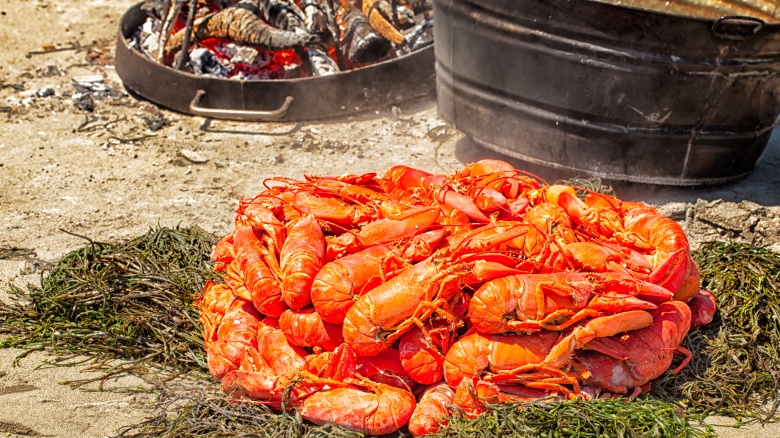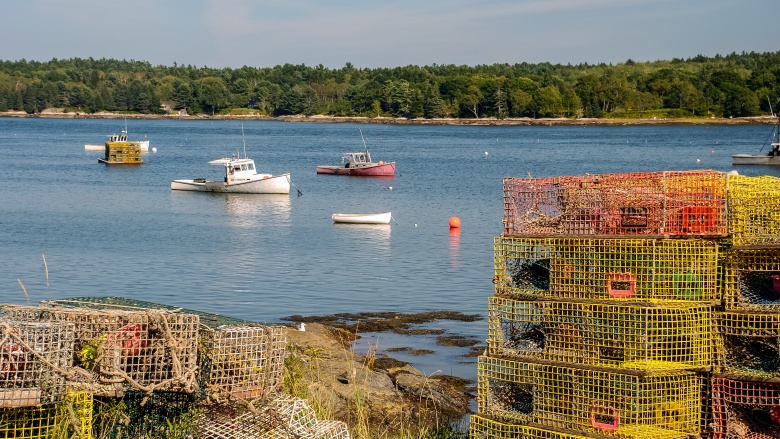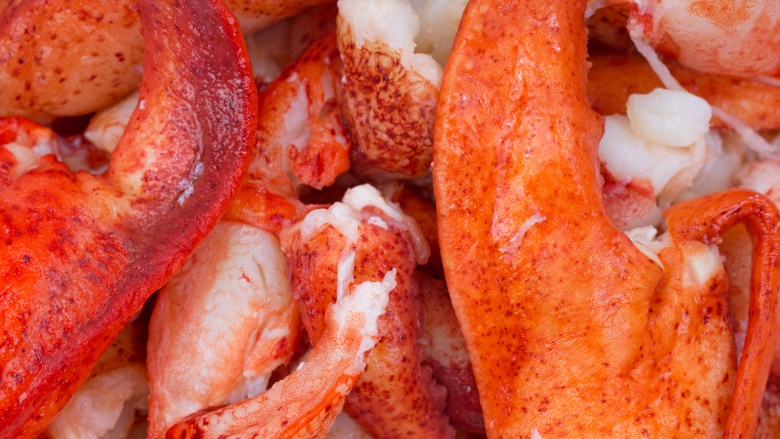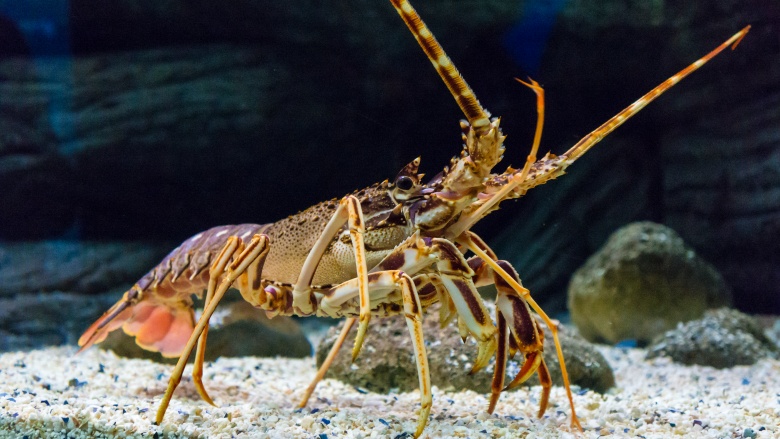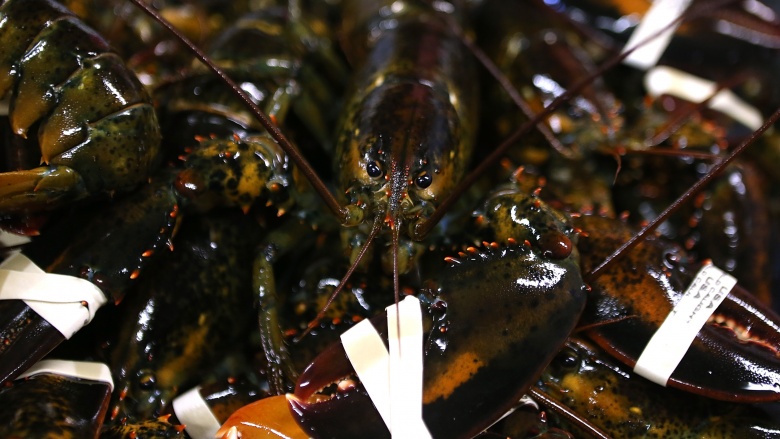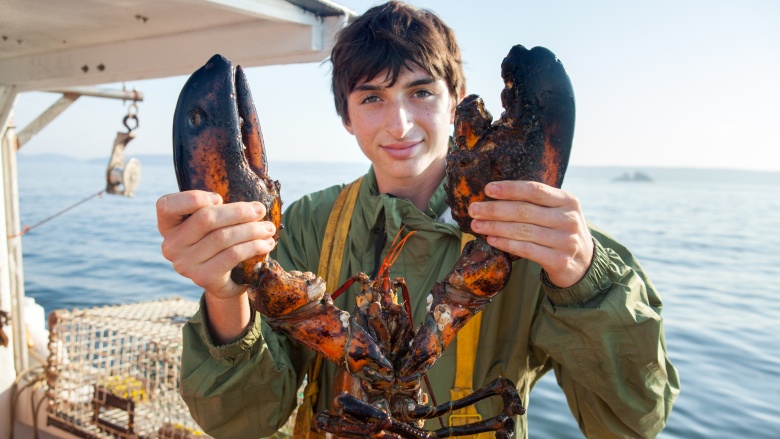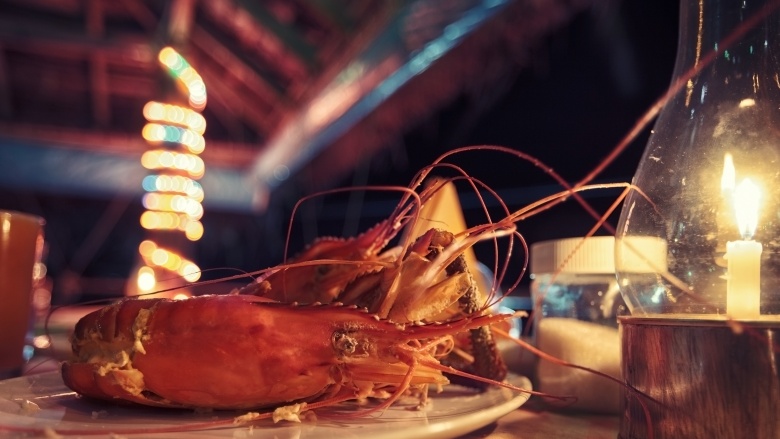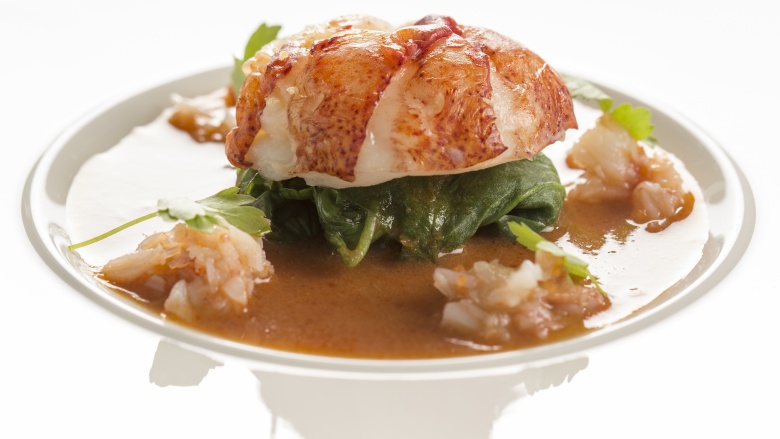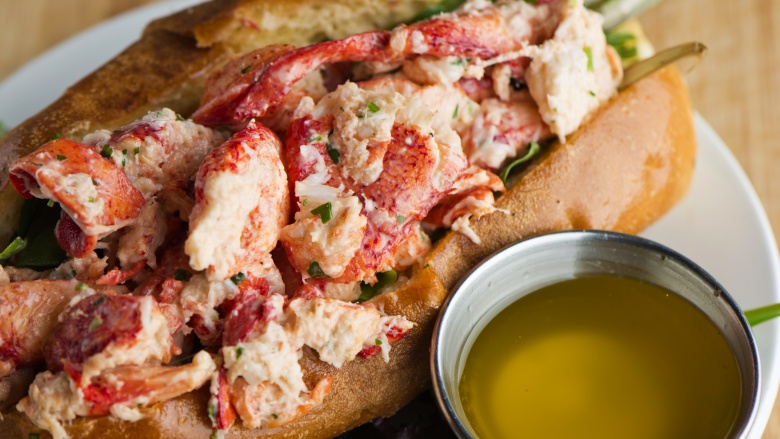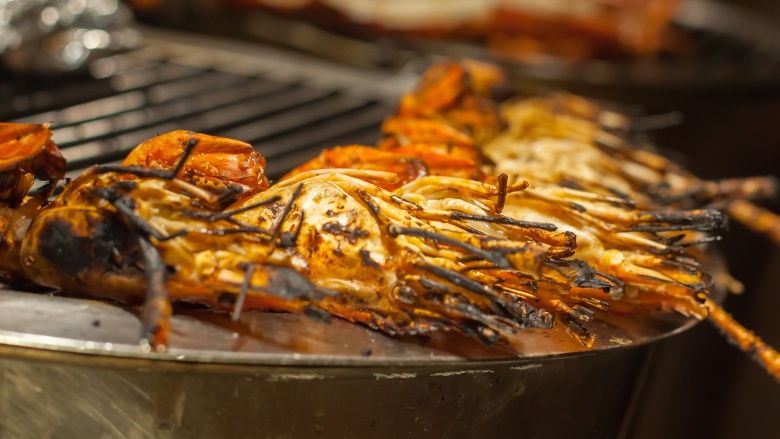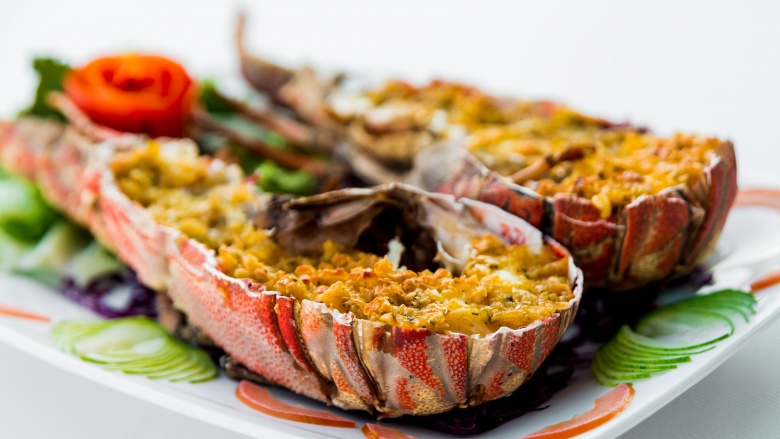How To Cook Perfect Lobster 4 Ways
With their impenetrable coats of armor, spider-like faces, and pinching claws, you have to wonder what first made folks consider making a meal out of Homarus americanus, aka the American or Maine lobster—but it was probably desperation and hunger. Living conditions were brutal for early settlers in New England and the north Atlantic in the 1600s. People lived on the brink of starvation, and lobster was a rich source of protein that was so abundant it could be gathered by hand all along the shoreline.
One way or another, our forebears eventually plunked it into a pot of boiling water and discovered that beneath its ugly exterior it hid sweet, delicate flavors and tender white flesh. Savvy coastal cooks learned that cooked lobster tasted best when freshly caught and cooked live within a few days, and while there have been advances in refrigeration and canning, there just isn't anything else that tastes as buttery, rich, and sweet as freshly caught lobster.
However, before you rush off to the store and spend a big wad of cash for live lobster, there are a few things you need to know, like which lobster to choose, how to buy it, how much to buy, how to prepare it, and how to cook it. We've made it easy for you to navigate this process by providing tips and recipes that will protect your lobster investment and create a sensational dish.
The lobster supply
Despite threats from warming oceans and outside competition, the lobster industry, especially in Maine (the nation's leading provider), continues to thrive and is experiencing record-breaking catches. In 2015, Maine lobstermen caught 121.1 million pounds of live lobster valued at $495.4 million, and this supply, along with modern refrigeration and overnight air delivery, is making buying lobster more than just a rare splurge at a pricey restaurant.
Fisheries are doing their best to make live lobster as easy to buy at the supermarket as chicken, and you can buy lobsters of any size or preparation online. Or if you just don't want the mess and labor, you can buy pre-shucked, meat-only packages that include just claw, tail, or knuckle meat. To ensure you get the freshest lobster possible, you can even buy directly from Maine lobstermen or reputable suppliers.
When to buy lobster
In New England, the laws of supply and demand and the vagaries of weather determine when you can or can't buy lobster, but it's generally harvested almost year-round. Water temperatures, storms, and climate changes influence the lobster supply, which then affects prices.
In the dead of winter, lobsters, also called "bugs," head out to deeper waters and lie low until spring. That makes catching them more dangerous, so wise lobstermen dock their boats and ride out winter storms and nor'easters to avoid fishing in rough seas with gigantic, boat-crushing waves. Because lobsters aren't as plentiful, scarcity drives the prices up, so unless you just can't live without the taste of lobster, you should save your money until spring or summer.
The best time of year to buy is before Memorial Day and after Labor Day. There is plenty of lobster to buy, you won't be competing with tourists for the catch, and the prices are much lower. Summertime, from June through September, is when tourists and weekenders descend on coastal New England fishing villages and vacation hot spots like Cape Cod. When they do, they plan on eating live lobster all summer long. Fortunately, their vacation time coincides with one of the peak harvest periods (fall is the other one), but they don't know they're missing out on soft-shell season, Mainers' best-kept lobster secret.
Soft-shell versus hard-shell
In New England, molting or soft-shell season is anticipated with as much excitement as pay day because Mainers know it's when lobster tastes best. During molting, soft-shell lobsters, or "shedders," slough off their old shells in order to grow. They do this frequently over their long lives, but the hard-shell lobster meat just can't compare to the intensely sweet, juicy, softly tender meat of the lobster as it sheds its old shell and grows a new one.
If you're wondering why you've never heard of any of this before, the official spin is that soft-shell is more perishable and thus doesn't travel well. Frankly, we think it's a Downeast conspiracy to hoard the soft-shell for themselves and keep this succulent secret, well ... secret. The fact that almost all of the soft-shell lobster sold is eaten right in New England along coastal towns up and down the Atlantic bears this out. Just take it from the folks who know lobster best and find a supplier for this special meat. Not that there's anything wrong with hard-shell meat—it's delicious, too—but it's just not soft-shell.
Maine lobster versus rock lobster
If you head to your local market, you will most likely find live Maine lobster on sale, along with another lobster that's definitely smaller and distinct due to his lack of claws. This is the Maine lobster's southern cousin, which lives in warm waters along the far southern coast and in the Caribbean.
His name is Panulirus argus, but his friends just call him a rock lobster or a spiny lobster. If you've ever bought frozen lobster tails before, chances are you've already met him—a lot of the tail meat sold comes from rock lobsters. While his meat is tasty, it's not as moist or sweet as Maine lobster raised in cold waters. Moreover, you just get more meat off a hard-shell Maine lobster, and rock lobsters are missing those heavenly pieces of claw meat that make lobster rolls so spectacular.
How to buy lobster
The skinny about how to buy lobster is simple: look for the ones with the liveliest personalities. Crustaceans can spoil quickly, and although lobsters can live up to three days if properly stored in seaweed in the refrigerator, it's best to eat them within two or three days and buy them only if they are as wriggly as Elvis Presley.
Pick up the lobster behind the claws and grasp it around the neck area, or place it on a table to see how active it is. A sluggish lobster is close to dying, and you definitely don't want to eat that. Instead, you want one that is alive and kicking, doesn't have droopy claws, flaps his or her tail vigorously, and spreads their claws wide open when picked up. To be sure, try this: push the tail straight, if it doesn't curl back up, it's a sign telling you to move on to your next victim.
Size matters
Depending on the size of your dinner party or how much lobster is called for in your recipe, you need to know how much to buy. If lobster is the main course, use the rule restaurants do: the standard portion for one normal adult is between 1 1/2 pounds and 2 pounds per person.
For ease of cooking, it may be easier to buy smaller sizes. Otherwise, buy based on the appetites of your guests and the amount specified in your recipe. When you go to buy lobster, here are the terms for each size and their weight.
1-pound: chickens
1-pound to 1 1/8-pound: heavy chickens
1 1/4-pound: quarters
1 1/2- to 1 3/4-pound: selects
2-pound: deuces or 2-pounders
2- to 2 1/4-pound: heavy selects
2 1/4- to 2 1/2-pound: small jumbos
Over 2 1/2-pound to approximately 4-pound: jumbos
Preparation
Okay! You've decided you aren't too squeamish to look your dinner in the eye and kill it, but now you have to prepare it so you can start cooking. If you don't feel good about boiling or steaming the lobster alive, and driving a knife through its brain to kill it instantly gives you the shivers, freeze the things. If you put the lobsters in the freezer for about 20 minutes, they go numb and you can boil or steam them with a clear(er) conscience.
Otherwise, you may end up with a catastrophe like the classic scene from Annie Hall. If you want to test your skills as a "hunter," you can also kill the lobster with a knife.
Butter-poached lobster
More than 15 years ago, acclaimed chef Thomas Keller, of French Laundry fame, created what is still one of the most exquisite and easiest way to cook lobster and highlight the meat's naturally butter character, moisture, and sweet, tender meat. The recipe in question is none other than butter-poached lobster.
Once you've tried this version of lobster, it will be hard to settle for simple steamed lobster served with drawn butter. To achieve this laudatory lobster extravaganza, you briefly cook the lobster in water to make it easier to shuck all of the meat from the shell. Next, poach the meat in a lovely bath of hot, melted butter for a mere five or six minutes and serve.
Lobster roll
Nothing says summer like a lobster roll so packed with claw and knuckle meat you can't fit the bun in your mouth. If you're looking for authenticity, two states—Connecticut and Maine—continue to vie for the title of lobster roll maven. We lean toward Red's Eats in Wiscasset, Maine, which rose to fame in the 1970s with their crusty, butter-toasted hot dog buns loaded with a pound of meat. Their version is a classic, served with drawn butter or mixed mayonnaise on the side.
To make lobster rolls at home, mix your cooked and chilled lobster chunks with mayo, diced celery, lemon juice, and cayenne pepper. Then toast your bun and you're set. It's simple, but God is in the details, so use only the freshest lobster and a good mayo, and make sure that bun is crisp and not soggy.
Grilled lobster tails
Barbecue cowboys with a craving for lobster will love cooking lobster on the grill. It's as easy as can be, cooks quickly, doesn't require a ton of preparation, and still lets you be the king of briquettes. For this recipe, you'll still start in the kitchen, boiling the claws in water and then poaching the bodies in a hot butter bath to do most of the cooking. After that, you'll cook them on a hot grill for about one minute per side (flesh and shell) to get a nice char. You can also do whole lobsters on the grill over lower heat for a longer time.
The most important thing to remember any time you cook lobster is to keep the heat low and test for doneness. Chefs prefer testing for temperature with an instant-read meat thermometer, and every cook should have one on hand to take the temp of the lobster before it turns into a tough rubber band. The optimal temperature for tender, moist lobster is 135 degrees Fahrenheit.
Grilling tails is a no-brainer, too, because you can take the easy way and use cleaned, ready-to-go rock lobster or Maine lobster tails. Just brush on your marinade and throw them on the grill over medium heat for several minutes per side. In minutes, you'll be sitting down to a fabulous meal.
Boiling and steaming versus baking
Any discussion of lobster has to include the two classic methods everyone knows: boiling and steaming. While these may be oldies, they aren't necessarily goodies when it comes to optimizing the flavor and texture of lobster. The problem with both boiling and steaming is that it's not as easy to keep tabs on the internal temperature of the lobster, which can spell disaster. Cooking any lobster meat too long makes it impossibly rubbery, whether it's boiled, steamed, baked, or barbecued. But with boiling, you are adding a ton of water to the cooking method that can dilute the delicate flavors of the lobster and make the meat feel mushy.
With steaming, the special juices of the lobster are leached out and into the pot and don't stay in the lobster to maintain the special lobster taste we all know and love. If you must steam or boil your lobster, pick the lesser of two evils and choose steaming. This recipe comes from the experts at the Culinary Institute of America and is how steaming should be done. You'll put a couple inches of saltwater or seawater in the bottom of your lobster pot, then insert your boiling rack with your lobsters. They'll need to steam for anywhere from 10 to 45 minutes depending on the size and number of lobsters in your pot. Be sure you use your meat thermometer to tell when they're done.
Otherwise, we recommend you try this fantastic recipe for baked lobster that will wow your dinner guests. It's loaded with garlic and butter and lets the sweet meat of the lobster shine through. It also looks fantastic served on a big platter ringed with sliced lemons, drawn butter, and fresh parsley.

